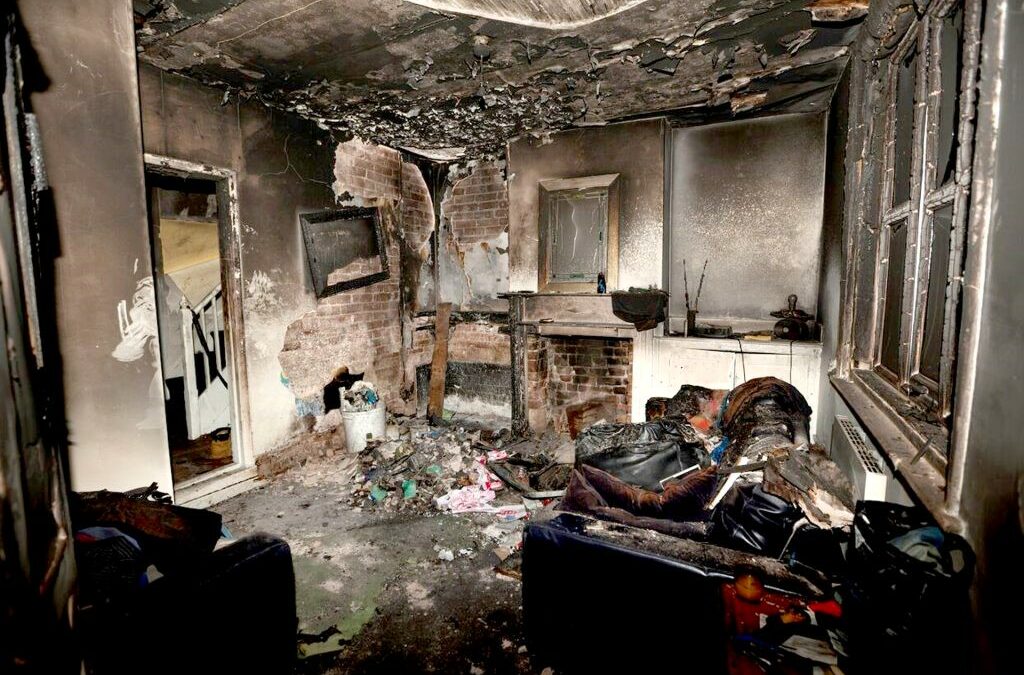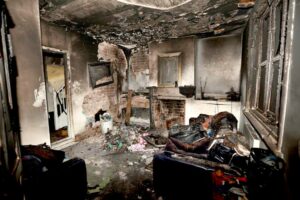How to Restore Fire Damaged House? The escalating number of house fires has become a pressing concern. Recent data suggests a rise in such incidents, posing significant challenges for homeowners. This guide is crafted to navigate the daunting process of restoring a fire-damaged house. It aims to equip homeowners with vital knowledge and actionable steps to recuperate and rebuild in the aftermath of a fire.
Restoring a fire damaged house requires a methodical approach, encompassing everything from navigating insurance claims to undertaking extensive repairs, thereby ensuring safety and a step towards normality.
Understanding the Impact of Fire Damage
The devastation wrought by a house fire can vary immensely, but the aftermath often leaves a trail of structural and emotional upheaval. In 2024, fire incidents have not only grown in frequency but also in intensity, underscoring the need for a robust recovery plan. This section delves into the common forms of damage caused by house fires, using recent statistics to illustrate the scope and scale of these disasters.
First Steps Post-Fire
Immediately following a fire, it’s crucial to contact your insurance company. They play a pivotal role in assessing the damage and determining the coverage for repairs and restoration. Equally important is ensuring personal safety; re-entering a fire-damaged house should only be done after receiving clearance from fire safety officials. This step is vital for both your safety and for the integrity of the insurance claim process.
Assessing Structural Integrity
After a fire, the structural integrity of your home is a primary concern. Hiring a structural engineer is essential to evaluate the condition of critical elements like floors, walls, and the roof. In 2023, advancements in structural assessment techniques provide a more accurate understanding of the damage and necessary repairs. This step will guide you in determining whether to repair specific areas or undertake a more comprehensive rebuild.
Addressing Electrical and Plumbing Systems
Fire often severely impacts a house’s electrical and plumbing systems. A thorough inspection of wiring is imperative to prevent future hazards. Any damaged or melted wiring should be replaced without delay. Similarly, plumbing systems must be checked for heat damage, leaks, or blockages. This step is crucial for ensuring the functionality and safety of your home’s vital systems.
Cleaning and Removing Debris
The process of cleaning up after a fire is both physically taxing and emotionally draining. It involves removing water-logged and soot-covered items, which if left untreated, can lead to mold and further deterioration. In 2023, specialized cleaning techniques, such as thermal fogging and the use of ozone generators, have become more accessible, providing efficient ways to cleanse your home of soot, smoke, and water damage.
Renovation and Rebuilding Strategies
Deciding whether to renovate or rebuild is a significant step. If the fire stripped your home to its beams, a full rebuild might be necessary. However, this also presents an opportunity to upgrade your home to modern safety and efficiency standards. Discussing with professionals about the possibilities can help you make an informed decision that aligns with your budget and future safety considerations.
Emotional and Mental Health Considerations
The trauma of a house fire extends beyond physical damage. The emotional toll can be overwhelming, making it crucial to acknowledge and address these feelings. Seeking support from community resources, counselors, or support groups can be invaluable during this time. Remember, rebuilding your home also involves rebuilding your life, which requires attention to both physical and emotional well-being.
Conclusion:
Restoring a fire-damaged house is a journey that encompasses various dimensions, from dealing with insurance and structural assessments to addressing emotional trauma. By following these steps, homeowners can navigate this challenging path with greater clarity and confidence. The goal is to not only restore the physical structure but also to rebuild a sense of security and comfort in your home.
FAQ Section about How to Restore Fire Damaged House?
Is it financially better to repair or rebuild a fire-damaged house?
The decision to repair or rebuild depends on the extent of damage, insurance coverage, and personal preferences. In many cases, insurance covers a significant portion of the restoration costs. Repairing can often be more cost-effective, but rebuilding offers a chance to incorporate modern designs and safety features.
How long does a typical house restoration take after fire damage?
The restoration timeline varies based on the damage’s severity, contractor availability, and the scope of repairs. Minor repairs might take a few weeks, while extensive rebuilding can take several months. It’s important to have a realistic timeline from your contractors for planning purposes.
Are there any specific precautions to take when cleaning up after a fire?
Safety is paramount during cleanup. Wear protective gear like dust masks, gloves, and safety glasses. Be cautious of structural weaknesses and toxic substances released by the fire. Hiring professionals for cleanup is often recommended to ensure safety and efficiency.
How do I ensure my renovated house is safe from future fires?
Incorporating fire-resistant materials and technologies in your rebuild is key. This includes using flame-retardant building materials, installing smoke detectors in all rooms, and ensuring your home’s electrical system adheres to the latest safety standards.
Can I make design changes to my house during the restoration process?
A restoration process can be an opportunity for design changes. Consult with your contractor and architect about potential improvements or alterations that can enhance your home’s functionality and aesthetic appeal, keeping in mind your budget and safety regulations.


